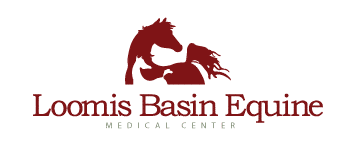
by LBEMC Admin
Share:
ARTICLE: Equine Wounds
It’s a beautiful Sunday morning and you have plans for a nice trail ride down to Folsom Lake. Your horse, knowing you have cookies in your pockets, whinnies as you approach his stall. As you slide the halter over his nose and walk him out of his stall, you notice some dried blood and a bit of swelling on his front leg. So much for a nice relaxing morning…or is it? When does a wound require prompt veterinary attention? Here are a few tips:
-
How deep is the wound? If it is a superficial abrasion (such as most bed sores) then keeping them clean and protected will allow them to heal. If it is a full skin laceration, suturing will aid in healing time and decrease scarring and infection. The size of the wound is noteworthy as well-extensive wounds (see picture) with lots of tissue trauma need more intensive treatment, possibly even hospitalization, for improved chances of healing.
-
Is the wound located over a joint or tendon sheath? If it is, it may have penetrated the synovial structure opening it up to the possibility of infection. These wounds can be life threatening due to the crippling consequences of joint/tendon sheath infections and require immediate veterinary attention. Such wounds should receive thorough lavage of the infected structure, often under general anesthesia, to flush out bacteria and debris. Follow up care includes intensive local and systemic antibiotic therapy to give the horse the best chance for survival with a good quality of life.
-
Is the horse lame? Wounds caused by trauma may have also caused damage to the bone, muscle, tendon, or ligaments beneath the skin. Infected synovial structures will also cause a horse to be quite lame. Your veterinarian may want to take radiographs of or ultrasound the affected area, or take a sample of synovial fluid for testing to more fully assess the cause of the lameness.
-
Is it a puncture wound? The foreign object (wood, metal, etc.) causing the wound may have broken off, leaving a piece inside which will impair healing. Also, puncture wounds deep into the tissues are ripe for developing anaerobic infections which can cause extensive tissue damage. Radiographs can help locate the deepest extent of the wound, identify structures that may have been compromised by the object, and detect if there is a piece of the object left within the wound.
-
Is there active bleeding from the wound? A small amount of bleeding from a fresh wound is to be expected, but a large stream or pulsatile squirting of blood from the wound is indicative of a severed blood vessel. Direct pressure should be placed on the wound to stem the flow of blood until your veterinarian arrives.
-
Is the wound not healing or getting worse? Most simple wounds should heal within 7-10 days. Infection of the tissues will slow healing time, as will repeat irritation /stretching of the tissues (as occurs when the wound is over a joint or rubbed when the horse lies down). Also, Summer Sores (wounds that become infected with larvae from the stomach worm that are deposited by flies) will often fail to heal without debridement and special ointment.

